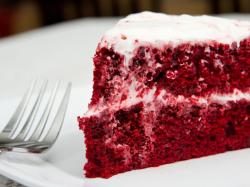Red Velvet Color Innovation Ideas
April 6, 2016 | 1 min to read

From Starbucks cakes to Oreos, Red Velvet seems to be everywhere. Traditionally, red velvet cake is a layered cake topped with cream cheese or roux icing. Many years ago, the red color came from the presence of vinegar and buttermilk reacting with the anthocyanins in traditional cocoa powder. But for most of the last few decades, the red color has been supplied by Red #40 dye, in part because cocoa powder used now is alkalized to neutralize its acidity.
About two and a half years ago, we noticed a dramatic increase in the number of customers inquiring about extending the red velvet concept into new areas. Cupcakes were a more obvious extension for red velvet but cookies and coffee beverages demonstrate the breadth of appeal for the idea. Red, after all, is a color that commands attention. Emerging on the scene more recently are macaroon inspired packaged food products, and a lot of these have gravitated towards red shades initially.
Synthetic Color Options
From a technical point of view, red velvet isn’t overly challenging when it comes to baking applications. Red #40 is extremely heat stable and you won’t experience shade shift across a wide pH range.
To read the rest of the story, please go to: Sensient Food Colors
